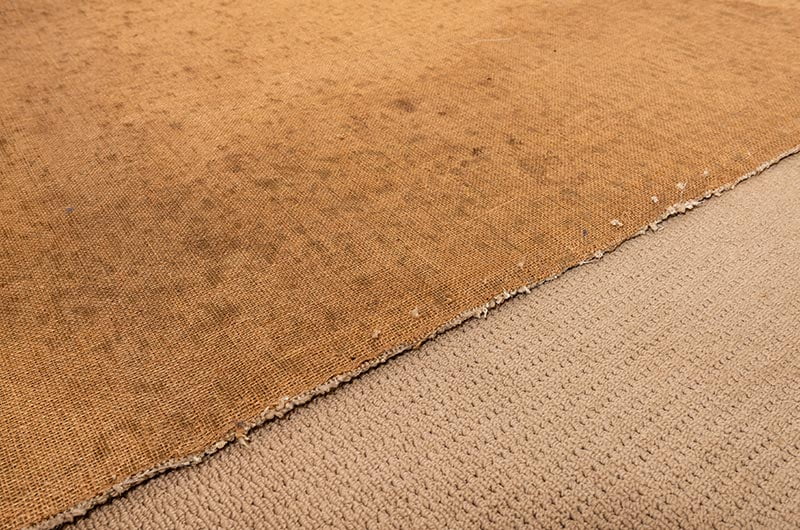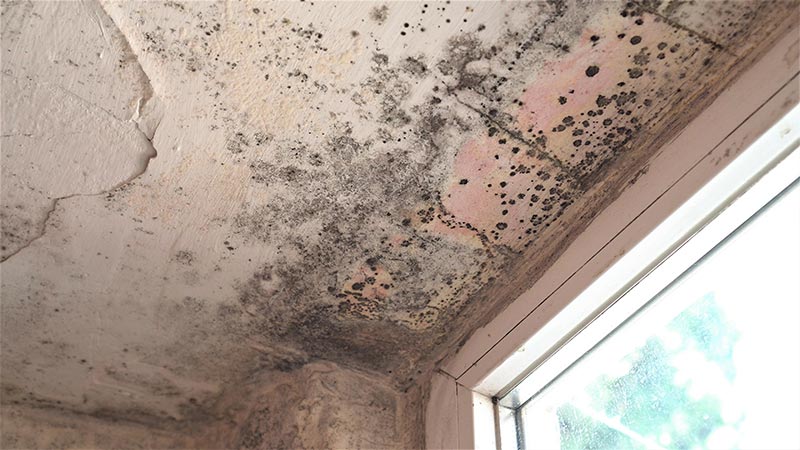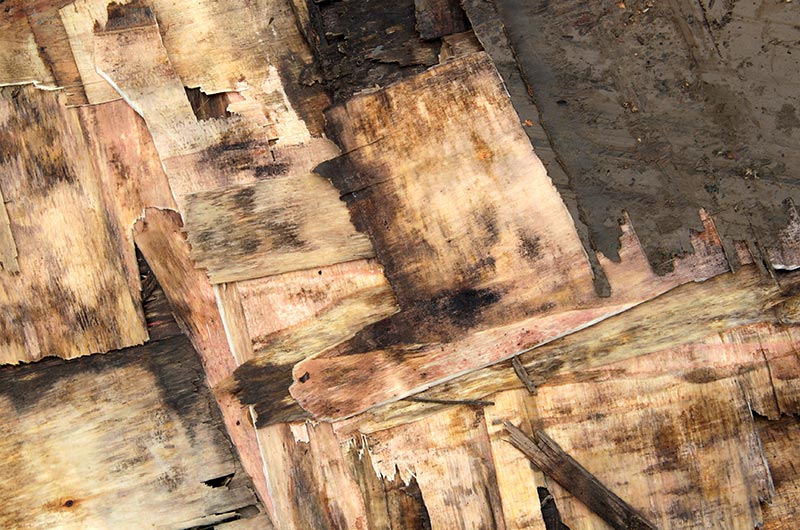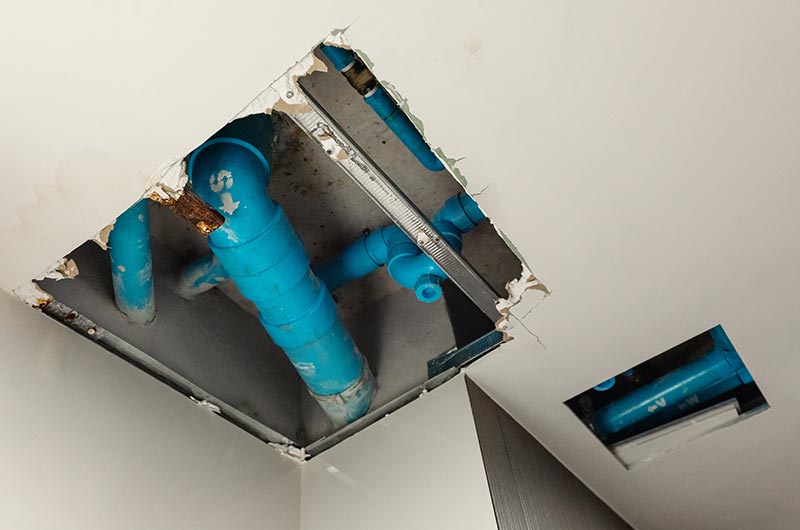Mould on plywood is the bane of every construction project. If you’re the project lead or building manager for a new development, here is a quick primer on the prevention or minimisation of mould growth in any area that has plywood.
What is mould?
Call it mould or mildew; it’s all the same. It’s a group of small fungi that resemble white, dark-brown or black fuzz, stains, or patches. These grow on any organic substance, indoors or outdoors.
When it comes to buildings and construction, mould can grow on building materials or any part of an existing structure. It can grow and spread quickly throughout a site, sometimes in just a couple of days or even overnight (i.e., from 4 to 12 hours).
Mould is nearly everywhere. Their microscopic spores float about in the air and settle on every surface. But these spores don’t germinate unless they land in a place that provides suitable growing conditions.
Why mould on plywood is a problem
To be clear: mould or mildew doesn’t cause damage to the structural integrity or strength of a building. However, its presence can put people and businesses at risk.
Health hazard
Mould spores are allergens and can cause a variety of symptoms in people and some pet animals, from sneezing, nose and throat irritation, nasal congestion, eye irritation, coughing, wheezing and skin rashes. The spores can also trigger or worsen asthma, and add complications to other existing respiratory problems.
But the worst hazards that moulds bring are mycotoxins. These are chemicals that have damaging neurological effects. (And exposure to high doses leads to neurological disorders and death.)
Given the right temperature and humidity, some mould species exude mycotoxins from their cell walls. Once the fungi release these into an indoor environment, the mycotoxins remain for months, even after you eliminate the fungi from the site. This is because mycotoxin molecules can stick to dust particles and become airborne. People or animals can then breathe in these particles.
Potential litigation
For ordinary homeowners, preventing mould might be a source of personal annoyance. But for building contractors and managers, mould can become a serious liability.
Any mould growth can eventually harm the occupants of the homes or buildings. That may lead them to file a case against the developer and the people involved with the construction. From there, the cost of managing the whole legal process, settlements and public relations can destroy a company or a professional’s career.
Conditions that encourage mould growth on plywood

But how does mould grow? And how does mould spread?
Part of the reason why mould is a common occurrence is that mould reproduces through spores. These spores are dispersed through air currents. Thus, you will find mould spores nearly everywhere. It’s a given.
However, the spores germinate only when they land in a spot with favourable growing conditions. So to avoid problems caused by mould on plywood or any manufactured wood product, you need to prevent the other conditions that enable the spores to grow.
Keeping these conditions under controllable levels is paramount. Dormant mould spores can remain viable for many years in hot or dry environments. Once the spores find themselves in suitable conditions, they come to life.
1. The abundance of any cellulose-based material
Mould is a fungus that grows on any organic, cellulose-based matter. Such materials serve as both a growth substrate (growing medium) and a food source. They can also accumulate microscopic debris or dust that serve as an extra source of nutrition for mould.
Unfortunately, anything made of plywood and other manufactured wood products falls under that category. (As do carpets, fabrics, wallpaper, books, and other organic or partially organic materials.) And the more organic material you have piled up in storage or installed at your construction site, the more chances there are for mould to gain a foothold.
2. Insufficient sun and ventilation
Unlike plant seeds, mould spores love dark, isolated places. So if there’s a corner or spot in your plywood storage area or worksite that gets little to no sunlight and limited airflow or movement, that’s where mould can start.
Stored piles of lumber, plywood, MDF, or particleboard that are kept in such conditions and aren’t used within a few months can develop mould growth.
At construction sites or existing properties, mould infestations typically start in attics and enclosed rooms, the upper sills of windows and doors, ceilings, dark corner mouldings, and even walls covered with wallpaper (especially if the wallpaper is non-porous and doesn’t allow evaporation of accumulated moisture underneath).
3. Excess moisture and Equilibrium Moisture Content (EMC)
The condition of any wood-based building material (e.g., solid wood, plywood, MDF, particleboard or chipboard) is dependent on the kind of environment it is in. Such materials can absorb or lose moisture according to the amount of humidity in the air.
If the environment has high humidity, the material may absorb too much moisture and expand. Or if the environment is too dry, moisture may evaporate from the material and it can contract.
But if you can manage the impact of atmospheric conditions in the environment,, the wood material can neither gain nor lose any more water beyond what it needs to maintain strength and integrity. It will then be in equilibrium with the ambient humidity.
In the construction industry, it’s called equilibrium moisture content or EMC.
Builders and architects usually talk of maintaining EMC when it comes to preventing wood from warping or shifting due to fluctuations in moisture. But EMC is also relevant to stopping the growth of fungi on wood material, like “dry rot” and mildew or mould.
This is because moisture triggers the germination of fungi spores to germinate. In fact, plywood or manufactured wood products don’t even need to reach fibre saturation point for that to happen. The smallest amount of excess moisture, even for short periods, is enough to trigger the growth.
However, the growth or spread of mould on such materials becomes accelerated under highly humid conditions (i.e., 60% humidity or higher).
How to prevent or minimise mould on plywood
Since the conditions that encourage mould on wood-based products are ubiquitous, it becomes a constant concern for everyone involved in construction and property management. Nevertheless, it’s not an impossible threat to deal with. The key to minimising mould on any property is early intervention.
That means you must take preventive measures from the start, even before installing the plywood.
1. Choose the right kind of plywood.
The first preventive measure you should take is to pick the correct type of plywood for your location and purpose.
Plywood is one of many engineered wood products or EWPs available today. (Other examples include MDF, melamine, particleboards, laminated veneer lumber, etc.) Plywood now comes in a wide range of types fit for many uses and hazards, including high humidity.
For instance, if you want plywood for interior floors and external decking in a damp climate or location, you will need pre-treated marine plywood. These have excellent resistance to excess moisture, great surface finishes, strength, and durability. These can help you avoid or minimise mould on plywood.
Make sure to consult both your designers and plywood supplier for the proper plywood type needed for the project.
2. Have the right design and execution.
Architecture and interior design are critical. These can either ensure or prevent the successful management of mould on your site.
Poor design and detailing can create areas within your finished structure that only amplify the conditions for mould growth. In the long run, that can negate any moisture-resistance treatment your plywood might have, as well as any future efforts at maintenance or remediation.
According to Forest & Wood Products Australia (FWPA), to properly protect plywood and other EWPs from hazards like moisture and mould growth, your structure’s design must address the following issues:
- Shielding – keeping EWPs like plywood away from direct contact with external moisture and weather (i.e., through features that block or deflect)
- Isolation – having plywood further separated or isolated from adjacent interior areas of the structure that can be sources or “traps” for moisture.
- Drainage – incorporating design features that allow natural drainage of water or moisture throughout the structure (and not just in spots directly connected to or near EWPs)
- Ventilation – how well the design allows the circulation of fresh air and wind throughout the structure, assisting natural evaporation of any accumulated moisture (from sources like dampness from surrounding grounds or foundation, internal condensation, plumbing leaks, spills, rain, etc.)
The architects and interior designers employed on your project should be familiar with these issues and what to do to address them. When creating the design, they should consider the site’s location, local climate, and the building’s intended use. The architects, designers and contractors must also work together to properly execute the details of that design.
A good design executed properly will enhance the service life of the entire structure, including any plywood within.
3. Ensure safe transport and storage.
Your bulk plywood supplier should be able to handle the safe delivery of your plywood to you. But once delivered, you’ll have to be careful with storage or any subsequent movement and exposure to moisture.
There are a number of important tips on how to handle plywood safely. Here are a few that specifically help minimise mould on plywood:
- When in storage, make sure the plywood is kept in a piling area sheltered from outside weather, water sources and accumulation of dust and other debris. Keep the plywood covered with protective sheets, if needed.
- Keep the plywood properly stacked on pallets, wedges, planks or anything that helps keep the stack lifted off the ground or storage floor. That way, the plywood is less exposed to any spills, dampness or mould spores in the dirt.
- Similarly, any transfer of the plywood to another location should involve transport arrangements that keep the plywood protected and safely stacked.
If at any time your plywood gets exposed to too much moisture (e.g., rain), more wild mould spores and temperature fluctuations, it can become the starting point of mould growth at your site, no matter where that plywood is used. For instance, if any of the structural plywood you use for your subfloors, walls and ceilings gets contaminated that way, the accumulated moisture in the material can still trigger mould outbreaks that can creep outward towards the visible surface (i.e., wallpaper, ceiling panelling). This can happen even inside an already well-designed protected space (e.g., upper floor bedroom).
4. Protect and treat the plywood.
To prevent mould growth, your contractor must make sure to keep vulnerable materials like plywood dry throughout the construction or final installation. That means:
- Giving plywood and other materials used in the design sufficient time to dry out any accumulated moisture.
- “Drying in” or sealing in the whole area to prevent any more penetration of excess moisture or dampness into where the plywood will be situated. (This is done at a point in time when the roof, walls, and windows are completed enough for workers to safely install the plywood.)
- Eliminating any extra sources of moisture or wetness that might occur during construction.
- Adding a layer of paint or special treatment on the plywood to bolster water resistance or provide a microbial barrier (if needed).
Maintenance
While preventive measures at the start of construction are important, you must still keep up with maintenance.
Once the plywood is installed and the building is fully operational, you and your building manager will have to schedule periodic inspections of the plywood installation and the rest of the structure for signs of possible mould growth. You may also need to call in engineers and building inspectors every year or so to help you check for problems that can create a cascade of other issues that encourage mould growth.
For more details, you can see the complete manual provided by Forest & Wood Products Australia (FWPA) on the installation and maintenance of EWPs like plywood. It provides a general list of items for a maintenance schedule that you can use as a checklist.
Remediation: When Mould Growth Occurs
But what can you do if you spot mould infestation in your plywood or anywhere on your project site?
If it gets to any of your plywood, do not attempt to have workers just sand off the visible growth and use contaminated sheets. You need to replace them.
And if mould does grow during or sometime after construction, do not attempt the remediation by just having in-house staff “clean up” the infested area. That situation requires the advice and help of experts. Get remediation specialists to help your contractor fix the problem, because it may entail the examination and full replacement of plywood components (i.e., subflooring, panelling) or even drastic modifications to the interior or structural design.
Source the right plywood
If you are after the most suitable plywood for your project, consult experienced plywood suppliers like FA Mitchell.
Apart from supplying a wide range of plywood types that can deal with all purposes and environmental conditions, we also provide treatment services for the prevention of dry rot and mould growth.
Our staff have many decades of experience in how to prepare and handle plywood.
Contact us today for all your plywood needs.






